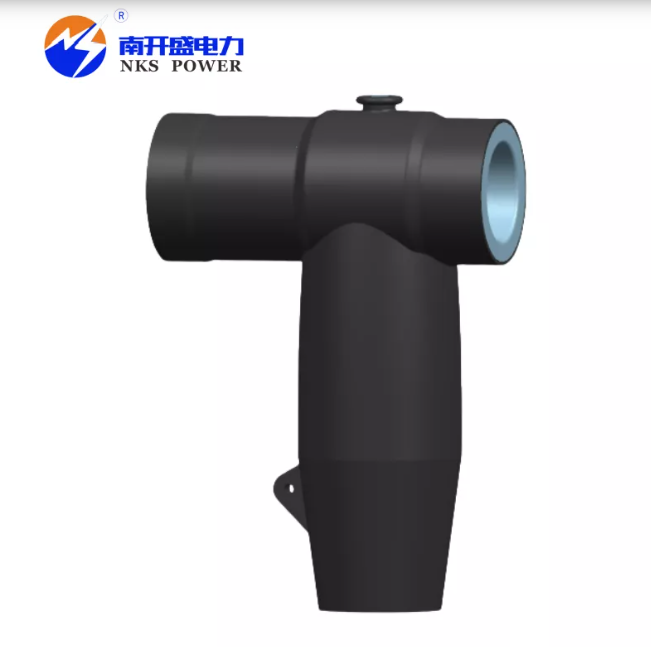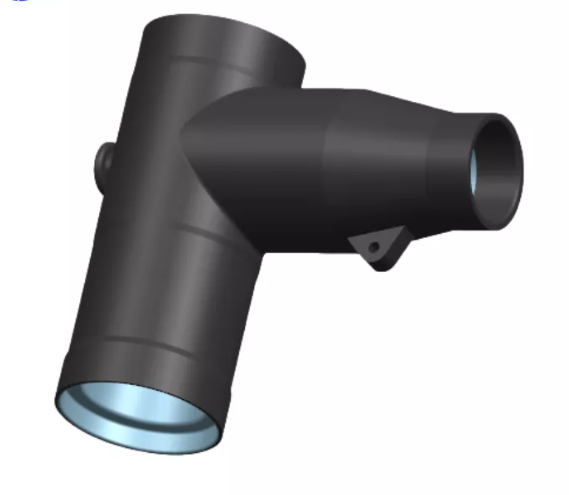It’s easy to focus on the big things in the power industry—the massive transformers, the sprawling substations, the humming machinery on a factory floor. But the reliability of all that impressive equipment often comes down to much smaller, less celebrated components. The cable connector is one of these unsung heroes. It’s the critical link that ensures power gets from point A to point B safely and efficiently.
In the world of industrial and power systems, a cable connector isn’t just a simple plug. It’s an engineered component designed to handle immense electrical loads and survive some pretty harsh conditions. Getting the choice right is crucial, as a failing connector can lead to everything from frustrating power interruptions to serious equipment damage and safety risks. This is a look into the surprisingly diverse world of these connectors, especially important types like separable and busbar connectors, and what really goes into choosing and using them properly.
Getting to Know the Key Players
While there are countless specialized connectors out there, a few types are workhorses in the power and industrial sectors. You'll see them again and again, and for good reason.
If you’ve ever wondered how technicians can safely work on medium-voltage underground power lines without shutting down an entire neighborhood, the separable connector is often the answer. Their main feature, as the name suggests, is that they can be connected and disconnected. This modularity is a game-changer for maintenance and system upgrades.
What’s really interesting about many of these is their "dead-front" design. Thanks to a heavy-duty EPDM rubber shield, the connector is fully insulated and touch-safe even when energized. For anyone working in the field, this is obviously a massive leap forward in safety. You'll typically find them in two main flavors:
Loadbreak Connectors: These are the ones that allow for energized operation. Think of them as a heavy-duty switch, letting crews isolate a circuit for repairs without causing a major outage.
Deadbreak Connectors: These require the system to be de-energized before they can be disconnected. They are used for more permanent connections to equipment like transformers, where they provide an incredibly secure and reliable link.
These are the go-to choice for underground distribution networks, wind farms, and any industrial campus where you need both reliability and the flexibility to reconfigure circuits.

Step inside a large electrical panel or switchgear, and you'll likely see rows of wide, flat metal bars—usually copper or aluminum. This is a busbar system, and it acts as a central distribution hub for high currents. The busbar connector is what allows cables and circuit breakers to safely tap into this power source.
Busbars are all about efficiency. Their large surface area is great for dissipating heat (a major byproduct of high current), and they provide a very stable, low-resistance path for electricity. The connectors that attach to them have to be just as robust, using heavy bolts or clamping systems to ensure the connection stays tight and secure. It's a system built on mechanical strength to guarantee electrical integrity. You see busbar arrangements everywhere, from data centers feeding power to server racks to the complex control panels running automated manufacturing lines.

3. Insulated Connector
While some connections can be left bare inside a protected enclosure, many critical links in the power system require their own built-in protection. An insulated connector is a broad category for any connector that includes a pre-designed, factory-made insulating layer. This outer layer, often made of durable rubber or polymer, covers the live metallic parts of the connection. Its primary job is safety—preventing accidental contact—and electrical integrity, stopping phase-to-ground faults or flashovers. Think of the difference between a bare metal compression lug and a fully shielded separable elbow; the latter is a perfect example of an insulated connector, where the insulation is an integral part of the connector's design, making it safe to the touch and resistant to environmental factors.
4. Termination Connector
A cable can't just stop; it has to be properly "terminated," especially in medium and high-voltage applications. A termination connector (or a "termination") is a component used to end a cable run and connect it to another piece of equipment, like a transformer, switchgear, or an overhead line. But its job is more complex than simply connecting the conductor. It must also manage the high electrical field at the point where the cable's shielding is stripped back. Without proper management, the electrical stress could cause the insulation to break down and fail. Terminations use components like "stress cones" to smoothly grade this electrical field. They also provide a robust environmental seal, protecting the cable's core from moisture. From the simple lugs used on low-voltage wiring to the complex "potheads" connecting underground cables to overhead utility poles, a termination safely manages a cable's endpoint.
5. T-Connector
Just as its name suggests, a T-Connector is all about creating a branch or a tap from a main, continuous cable run, forming a distinct "T" shape. This allows a single primary line to feed multiple locations without needing to be cut and spliced. In a high-voltage substation, a T-Connector might be a large, rigid, bolted aluminum fitting that taps a smaller conductor off a main bus pipe. In underground distribution, a "T-body" is a common type of separable connector that allows one cable to feed a transformer while also continuing on to the next one, forming a distribution loop. It's a fundamental building block for creating flexible and logical power distribution networks.
It's All About the Materials
A cable connector is only as good as what it's made of, and industrial settings can be incredibly unforgiving. The choice of materials isn't accidental; it's a careful calculation of performance, environment, and lifespan.
| Component | Common Materials | Why It Matters |
| Conductor | Copper, Aluminum | Copper is king for conductivity, but aluminum is lighter and more cost-effective, so you see both. |
| Insulation | PVC, XLPE, EPDM Rubber | This is the electrical shield. The choice depends on voltage, heat, and how much flexibility is needed. |
| Housing/Jacket | EPDM Rubber, Thermoplastics, Metals | This is the connector's armor against moisture, chemicals, sunlight, and physical abuse. |
| Contacts/Pins | Plated Copper Alloys (tin, silver, gold) | The actual point of electrical contact. Plating is key—it prevents the corrosion that can ruin a connection. |

Where These Connectors Show Up
The sheer variety of applications for a modern cable connector is pretty amazing. They are tailored for all sorts of demanding jobs.
Industrial Automation: On a factory floor, robots and machines are in constant motion. The connectors here have to handle endless vibration and flexing. It’s why you often see rugged circular connectors with screw-on locks; they simply don't shake loose.
Renewable Energy: A solar panel installation or a wind turbine sits outdoors for decades, facing rain, ice, and blistering sun. The connectors used have to be completely weatherproof and UV-stable to last.
Mining: Think about a mining operation. The amount of dust, moisture, and sheer physical abuse is on another level. The cable connector used there can't be an off-the-shelf part; it has to be built like a tank.
Food & Beverage: These facilities have strict hygiene rules, so equipment is constantly being pressure-washed. Connectors need high IP ratings (a measure of their sealing) to keep water out and are often made from stainless steel to prevent rust.
Making the Right Choice (And Making It Last)
A high-quality connector can still fail if it's the wrong one for the job or if it's installed poorly. Getting this part right is less about technical specs and more about asking the right questions.
The Electrical Load: It seems obvious to match the voltage and current, but it’s worth digging a bit deeper. You always want a connector rated comfortably above your system's maximum continuous load. But what about intermittent peaks or potential fault currents? A connector on a large motor, for example, has to withstand the massive inrush current every time it starts up. Using an underrated connector is like using a garden hose to fight a fire; it might work for a moment, but it's destined to fail, often by overheating and creating a serious fire hazard.
The Environment: The location is everything. A connector living in a climate-controlled data center has a much easier life than one on the deck of a ship. Is it going to be exposed to salt spray, which is incredibly corrosive? Or the harsh washdown chemicals in a food processing plant? Think about fine, conductive dust in a metal fabrication shop or the constant UV radiation on a rooftop solar installation. This is where you look at materials and the IP (Ingress Protection) rating. An IP67 rating, for instance, means the connector is completely dust-tight and can be submerged in water, offering a high degree of confidence for wet or dirty locations.
The Physical Stress: A connection's life isn't always static. Consider a connector on a large industrial generator set or a stamping press; it's subject to constant, heavy vibration that can slowly work connections loose. For these applications, a robust locking mechanism—like a threaded coupling or a heavy-duty lever lock—isn't just a feature, it's a necessity. It’s also important to think about how often it will be connected and disconnected. A connector that’s part of a modular machine needs to be rated for many mating cycles without wearing out, whereas a connection that's bolted in place once and never touched again has different design priorities.
The Cable Itself: The connector and the cable are two halves of a whole system. A perfect match is essential. The connector must be designed for the cable's specific conductor size (AWG or mm²), but also for its insulation diameter and whether the conductor is solid or has fine stranding. A seal that’s too loose won’t keep moisture out, and a clamp that’s too tight can damage the conductor. It’s a precision fit, and getting it wrong is a common source of connection failure.
Tips: Choosing a reliable cable connector manufacturer can help you ensure optimal electrical performance, enhance safety, and minimize the risk of maintenance issues in the long term.
Installation and Upkeep: Where Theory Meets Practice
Proper installation is non-negotiable; it’s where a well-designed connector becomes a reliable connection. Always follow the manufacturer's directions because they know the product's tolerances best. This means using the right tools for the job—a calibrated torque wrench for power lugs, not just any wrench, or the specific crimping tool designed for a particular terminal. Over-torquing a bolt can damage the threads or crush the conductor strands, while under-torquing is a classic cause of high-resistance hotspots that lead to overheating. It’s a craft, not just a task, and the details count.
Maintenance is one of those things that’s easy to forget but can save a world of trouble. A regular visual inspection is a great habit, especially for critical connections. Look for tell-tale signs of trouble: any discoloration of the metal (yellow, brown, or blue hues can indicate extreme heat), insulation that looks cracked or brittle, or signs of corrosion like white powder on aluminum or green on copper. In high-vibration areas, periodically checking that bolted connections are still tight is a simple but effective preventative step. For critical facilities, periodic thermal imaging (thermography) can even spot a connection that's starting to overheat long before it becomes a visible problem. A little preventative care goes a long way.
The Bottom Line
In the end, the humble cable connector plays a surprisingly large and vital role in keeping our industrial and power infrastructure running. It's a component that demands respect, not to be treated as a simple commodity. Its selection requires a holistic view of the entire system—the electrical demands, the mechanical stresses, and the environmental challenges it will face.
By appreciating the engineering that goes into each type, from a separable elbow to a heavy-duty busbar clamp, and by committing to a thoughtful approach to selection and installation, we ensure these critical links don't become the weakest ones. In an increasingly electrified and automated world, the reliability, efficiency, and safety of our systems often depend on the integrity of these small but essential connections.

















